When I booked a trip to photograph Arctic Foxes on a remote nature reserve in Iceland, I had no idea the experience would not only change my photography but also my life.
Everyone has those moments that we know were pivot points in our lives. Whether it is overcoming a challenge, achieving a long-term goal, or facing a fear, these are the moments that ask us to step into main character energy. For me, it was enduring the worst weather I have ever experienced all to capture one photograph of the elusive, resilient Arctic fox in its own habitat.
The Arctic fox is Iceland’s only indigenous animal. Resilient and adaptable, the Arctic fox has claimed its throne as king of Iceland’s snowy tundra and rugged highlands region.
Ever since I spotted my first fox while on a road trip through the highlands, I have wanted to photograph them. I couldn’t think of a better place than Iceland’s remote nature reserve in the West Fjords region called Hornstrandir. I dreamt of capturing images of a snow-crusted fox in a snowy winter scene.
There was one large catch, though: I have Reynaud’s disease, a circulatory disorder that literally means I am allergic to the cold. Joke’s on me because I love winter and places like Iceland, not the Maldives. The biggest challenge with Raynaud’s is that it affects my hands the most, which means painful and numb fingers, a big problem with outdoor photography.
Through the years, I have learned tips and tricks to stay warm, but as I get older, it gets worse, and I knew going into this it would be a challenge. As an ex-Ironman and ultra-marathoner, I was no stranger to challenges, but this one was about to test my comfort zone like never before.
The Storm
When we sailed into Hornstrandir, five photographers, a caretaker, and I were greeted with clear blue skies and calm winds. There was barely any snow. Only a few remaining patches shone between brown long grass and black stones.
That evening our caretaker, Jake, sat us down. His tone was concerned as he described what we would face the next day.
“There is a storm coming,” he said. “And it’s going to be pretty bad out there.” He went on to describe winds that would gust up to forty MPH, snow, ice, and sub-freezing conditions. Everyone fell silent. I, the least experienced in the group, grew worried, but I said nothing.
The following morning, I could not believe what I awoke to. The magnificent fjord was now obscured in a complete whiteout. Gusts were blowing in every direction, pounding the landscape with snow. Most of the windows to Kviar lodge were ice-crusted, and the wind howled over the lodge as if it were bent on blowing us away.
We met at the breakfast table, geared up and all looking concerned about what we were about to face. I was unsure if I could withstand it. I should mention I also weigh about 110 lbs, and the Icelandic wind has thrown me around before. It is not fun.
The others ventured outside. I, however, climbed the narrow stairs down to the kitchen, where I found Jake prepping hot water and soup. He was the best at taking care of us, always a step ahead of what we may need.
“I am afraid to go out there,” I said. Although I did not know Jake at all, I felt comfortable telling him. He had a non-judgmental, friendly way about him, and it was welcomed. I explained my fear. “I have Raynaud’s.” I was fiddling with Heat Company mittens, unsure if they would save me.
“So do I,” he replied, and I was relieved to hear this.
Jake went on to provide tips on how I could stay warm, extras, like keeping two hot water bottles in my backpack against me, and one inside my parka that I would sip. I took his advice, but still hesitated.
I stared out the window at the growing weather. He sensed my hesitation.
“You know,” he began, “it all depends on how bad you want it.”
That simple phrase did something in me. Within seconds I was out the door. The icy wind stung as I stumbled down the narrow path to the beach. I figured if I found a spot near a boulder besides the cliffs, I would have some shelter. I was partially right.
The cliff provided me some reprieve, but not entirely. Eventually, the wind changed directions and then again. It was impossible to see at some points, let alone spot a fox walking on the beach.
I sat there for five and a half hours. On occasion, I would stand, walk a few steps with numb feet on the rocky shore, and then find another place to crouch. I did this more for morale than anything because the conditions were terrible, no matter where I sat.
I was so cold and ice-covered that I was part of the landscape. I am positive a fox would not be able to tell a difference between a snow-covered boulder and me in my black parka, it all looked the same.
Eventually, I got my fox. In that moment, I felt no pain. No frozen hands, no stiff knees, or blowing wind. All I felt was joy.
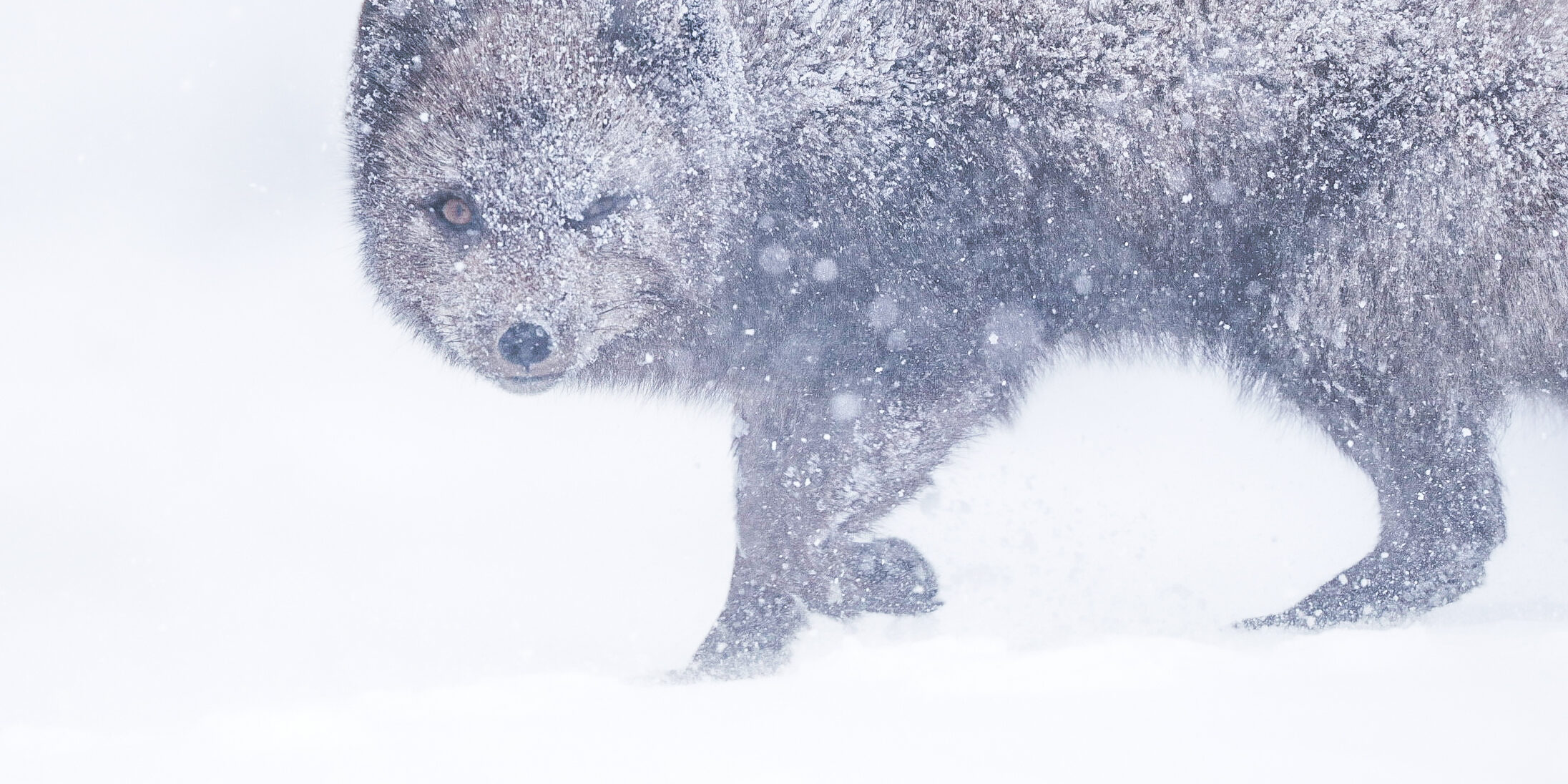
The next day, I went out in the same weather, with less fear. I hiked up the slope into the wind and snow to the hills in the distance. I waited for hours, saw no fox, but it didn’t matter because it was the experience that changed me. Later day I saw foxes and Harlequin ducks, and a seal. It was as if the Icelandic weather gods were like, “here, you earned it.”
The images I captured I earned. Not only did I witness the miracle of Arctic nature, but I experienced the miracle of human resolve.
How This Carries Over To Life
When I left Hornstrandir, I journeyed to another remote place in Iceland, an island called Hrísey. There I swam in the ocean, jumped in an ice-cold plunge, and went out in a storm to photograph birds. I did all this without fear, without thinking about it. I just did it and it was awesome.
One day, I decided to take a 3-hour ferry to an even more remote island called Grimsey to photograph puffins. As I stood there on the island’s most northern tip, looking out over the vast sea, I realized I was the first woman in my family to reach the Arctic Circle, and all alone. That was pretty cool.
When I returned from my trip, the question lingered: how bad do I want it? Before I left for Iceland, I was sleeping in, hesitated before pitching photo shoot ideas, and overall was not taking photography seriously enough. I wondered if I had what it took. Do I have enough passion? Enough resolve? Enough determination.
Now, every morning, I am up at four thirty and out the door by five fifteen with my prepacked camera bag. I know now, without a doubt, I do have enough passion, enough determination, and enough resolve for this. Even if I see or photograph nothing, it still gets me out there. It is still an experience.
By photographing the Arctic fox and its resilient spirit, I found within myself my own resilience.
Thanks, Jake, for asking me that one question: How bad do you want it?
Have you ever had a photograph that changed your life? I would love to hear about it!
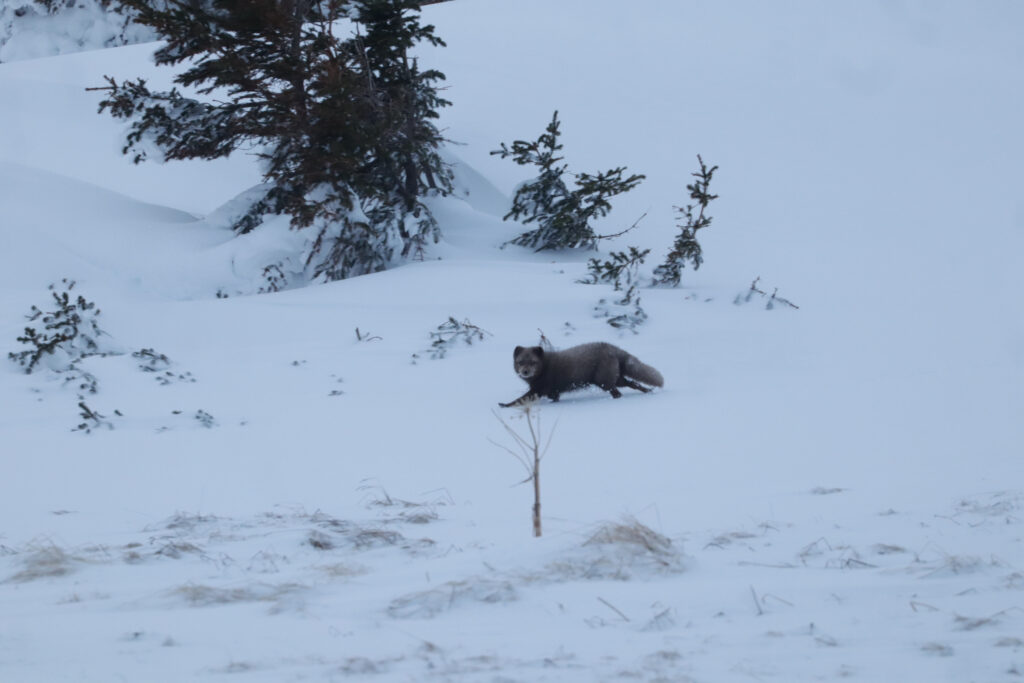
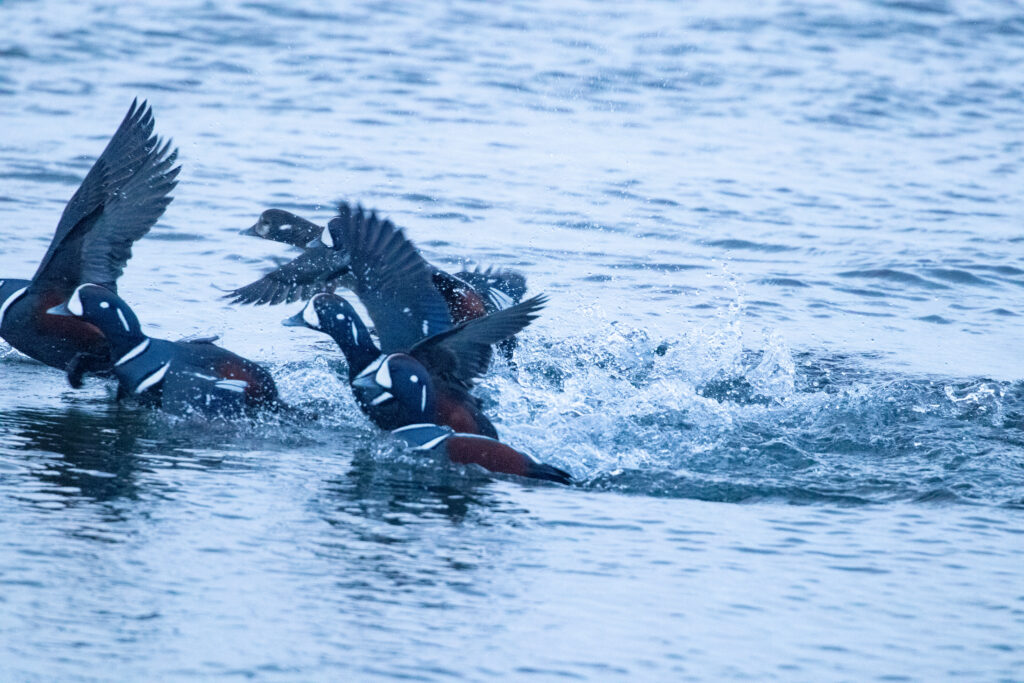
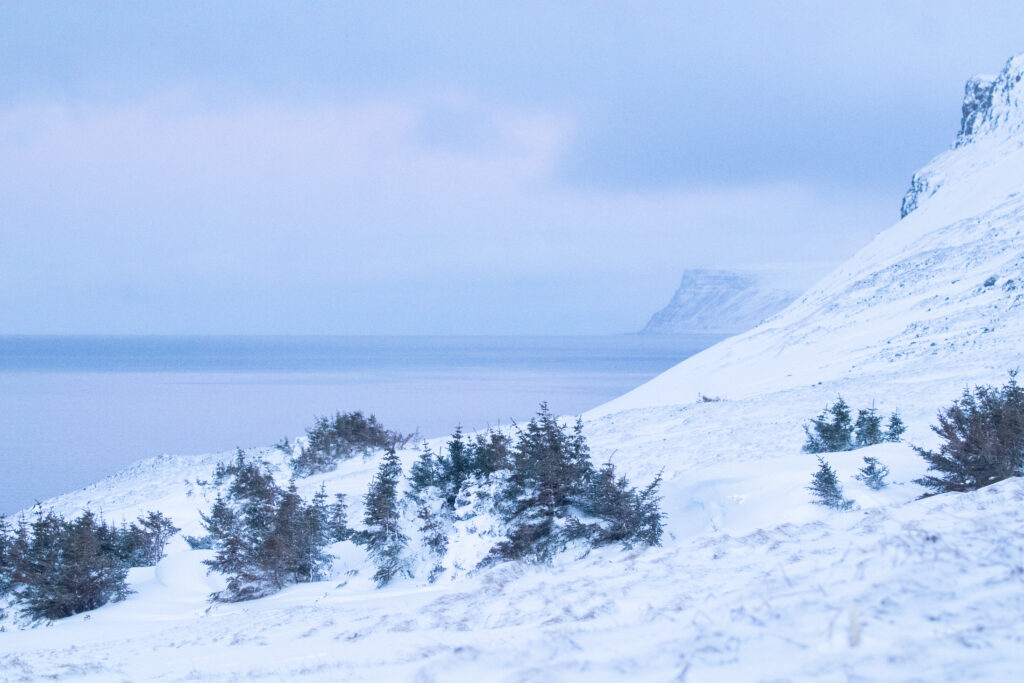

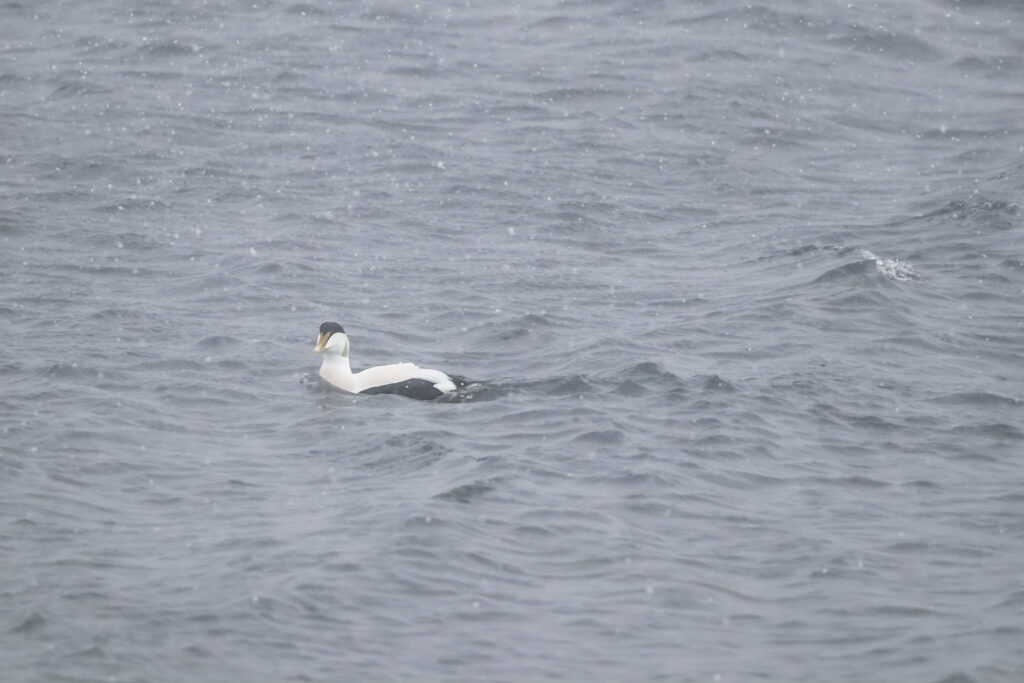

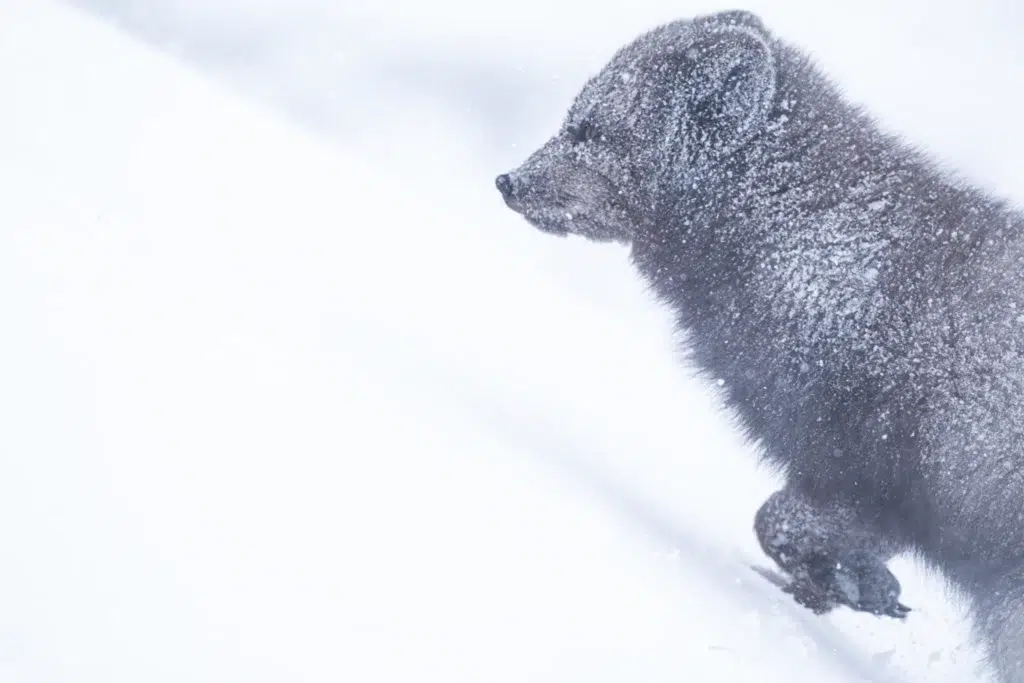
If you enjoyed this post you may also enjoy
Photographing Arctic Foxes on Iceland’s Hornstrandir Nature Reserve
Discovering Puffins on Grimsey Island: A photographer’s dream




